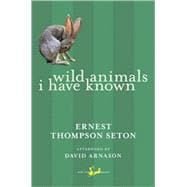
What is included with this book?
| Note to the Reader | p. XI |
| Lobo, the King of Currumpaw | p. 3 |
| Silverspot, the Story of a Crow | p. 33 |
| Raggylug, the Story of a Cottontail Rabbit | p. 57 |
| Bingo, the Story of My Dog | p. 97 |
| The Springfield Fox | p. 123 |
| The Pacing Mustang | p. 153 |
| Wully, the Story of a Yaller Dog | p. 187 |
| Redruff, the Story of the Don Valley Partridge | p. 211 |
| Afterword | p. 250 |
| Table of Contents provided by Ingram. All Rights Reserved. |
The New copy of this book will include any supplemental materials advertised. Please check the title of the book to determine if it should include any access cards, study guides, lab manuals, CDs, etc.
The Used, Rental and eBook copies of this book are not guaranteed to include any supplemental materials. Typically, only the book itself is included. This is true even if the title states it includes any access cards, study guides, lab manuals, CDs, etc.
Excerpted from Wild Animals I Have Known by Ernest Thompson Seton
All rights reserved by the original copyright owners. Excerpts are provided for display purposes only and may not be reproduced, reprinted or distributed without the written permission of the publisher.